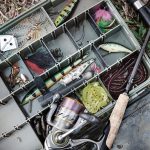Based on a “rigorous” review by a team of U.S. Fish and Wildlife Service biologists of previously released preliminary data, the Service has compiled an expanded report of the birds rescued and collected during the response to the Deepwater Horizon oil spill.
This report, which will be provided regularly moving forward, outlines a species-by-species breakdown and maps of where the birds were collected, Assistant Secretary of the Interior for Fish and Wildlife and Parks Tom Strickland announced today.
“These new detailed reports will give us a better initial picture of the effects to migratory bird populations from the Deepwater Horizon spill, help guide our efforts to restore these populations and help ensure that those responsible will be held accountable for the full impacts of the spill,” Strickland said.
The initial report released by the Fish and Wildlife Service today showed that as of September 14, 2010, a total of 3,634 dead birds and 1,042 live birds have been found in areas affected by the Deepwater Horizon spill. These numbers are subject to verification and cannot be considered final. Of the dead birds, the largest numbers are laughing gulls, followed by brown pelicans and northern gannets.
These numbers will be updated as the team of biologists continues the verification process which can take several weeks. Until the response to this environmental disaster is complete and birds are no longer being captured alive or collected dead, any numbers regarding birds must be considered preliminary.
About 1.5% of the current total represents birds collected live that later died. As data continues to come in, the Service will report on the number of live birds that have died.
In the meantime, the unverified preliminary numbers will continue to be updated daily to provide a glimpse into the spill impacts on birds that depend on the northern Gulf Coast.















